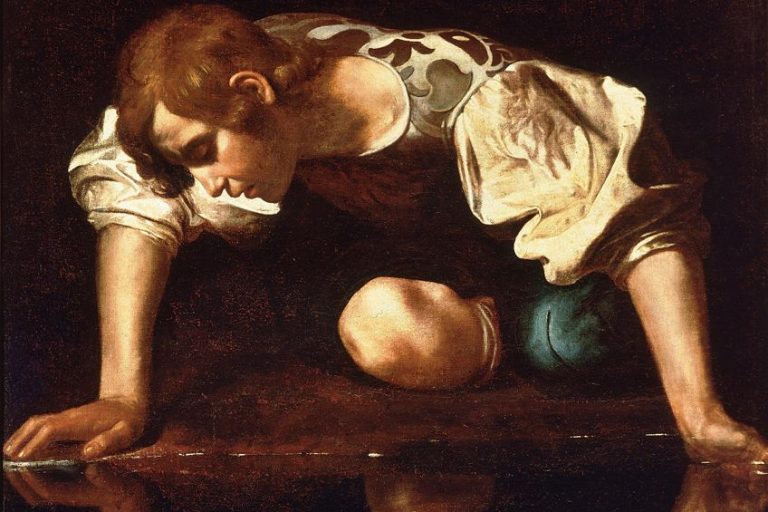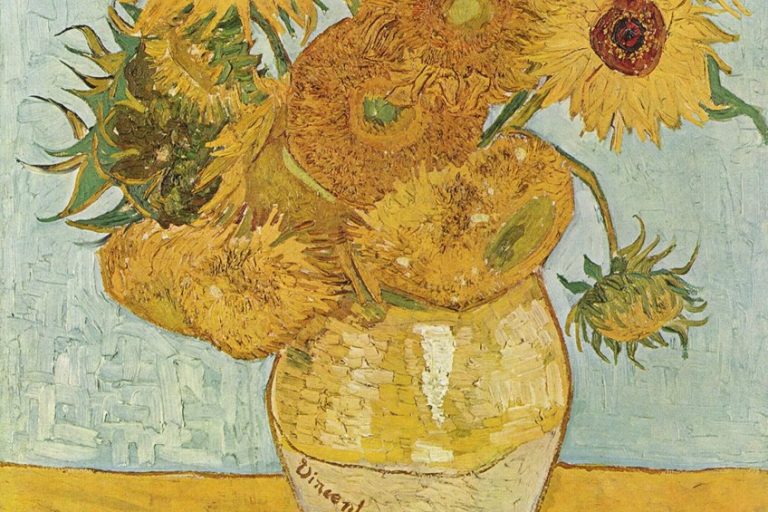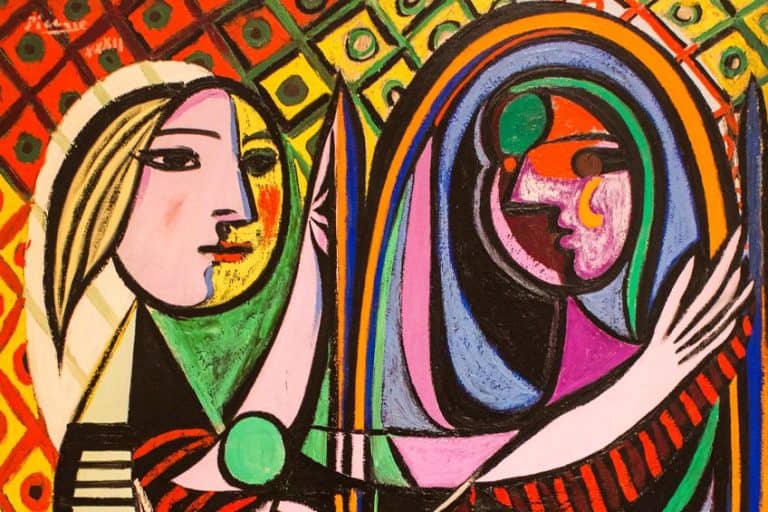“Along the River During the Qingming Festival” by Zhang Zeduan
Along the River During the Qingming Festival is a masterpiece of Chinese art created by Zhang Zeduan during the Song Dynasty. This iconic painting, also known as Qingming Shanghe Tu, vividly captures the bustling life along the Bian River during the Qingming Festival, offering a rich panorama of daily activities, architecture, and landscapes of 12th-century China. Its meticulous detail and narrative depth make it a celebrated cultural treasure, offering a window into the past and reflecting the artistic excellence of the era.
Key Takeaways
- The artwork is a detailed representation of Song Dynasty life during the Qingming Festival.
- Its artistic techniques and composition offer insights into the development of Chinese landscape painting.
- The scroll serves both as a masterpiece of art and a valuable historical document.
Historical and Cultural Context
| Artist | Zhang Zeduan (1085 – 1145) |
| Date Created | Early 12th century |
| Medium | Ink and color on silk |
| Genre | Genre painting, landscape painting, and scroll painting |
| Period/Movement | Chinese Art during the Song Dynasty |
| Dimensions (cm) | 25.5 x 525 |
| Series/Versions | Single version, no known series |
| Where Is It Housed? | Palace Museum, Beijing, China |
| What It Is Worth | Priceless, considered a national treasure |
Along the River During the Qingming Festival is a panoramic handscroll painting that is a cornerstone of Chinese cultural heritage, attributed to the Song dynasty artist Zhang Zeduan. The artwork offers an invaluable depiction of the bustling urban life and the serene rural scenery of the time, providing an intricate snapshot of the period between 1085-1145. The painting is remarkable not just for its aesthetic value but also as a historical document that offers insights into the daily lives of a range of social classes in Bianjing, modern-day Kaifeng, during the Qingming Festival.

With an extraordinary level of detail and a length spanning over five meters, this painting captures various aspects of the cityscape and the diverse activities of its inhabitants. It is celebrated for its sophisticated composition, pioneering use of perspective, and the vibrancy it lends to its subjects, from riverboat workers to the gentry.
The work is revered for its meticulous portrayal of the era’s architecture, fashion, and social interactions, which contribute to its significance as an art piece and as a repository of historical information.
Qingming Festival
Qingming Festival is a traditional Chinese festival observed on the 104th day after the winter solstice, usually falling on April 4th or 5th of the Gregorian calendar. It is a time when families pay respects to their ancestors, tending to their gravesites and engaging in remembrance. The festival is also a celebration of spring, with activities such as spring outings and flying kites. It reflects a society deeply rooted in familial respect and the embrace of the changing seasons.

Song Dynasty and Bianjing
During the Song Dynasty, specifically the Northern Song period (960 – 1127), the capital city Bianjing, today known as Kaifeng, was a hub of prosperity and innovation. The Song Dynasty is known for its significant advances in Chinese civilization, including art, science, and commerce.
As depicted in Zhang Zeduan’s painting, it was a period when Chinese society was remarkably busily engaged in urban commerce, reflective of a peaceful society with a strong emphasis on social order and cultural refinement.
Zhang Zeduan and His Legacy
Zhang Zeduan was a Chinese painter of the Song Dynasty, whose name has been immortalized through his work, Along the River During the Qingming Festival . His legacy is a testament to an artist whose detailed portrayal of Bianjing provides invaluable insights into the customs, lifestyle, and urban environment of the time. His work not only exemplifies the sophisticated artistic techniques of the era but also endures as a cultural treasure that offers later generations a vivid portrayal of Chinese history and civilization.

Artistic Significance
Along the River During the Qingming Festival is renowned for its meticulous representation of the Northern Song dynasty’s capital, featuring illustrious structures and a vibrant display of daily activities on silk using fine ink and varied colors.
Rainbow Bridge and City Gate
Rainbow Bridge, an iconic architectural element in the painting, serves as a testament to the period’s engineering feats. It not only highlights the technical expertise but also symbolically connects different parts of society, as depicted by the throngs of people and the bustling trade on and around the bridge.
The portrayal of the City Gate further accentuates the city’s grandiosity, strategically positioned as both a defensive structure and a marker of Bianjing’s urban threshold.
Ink and Color on Silk Technique
Zhang Zeduan’s use of ink and color on silk is a technique that demands precision. Each detail, from the texture of the river to the subtleties of period clothing, showcases the intricate application of varied hues and intensities of ink. This painting does not prominently feature the style of renowned landscape painter Fan Kuan; instead, it deploys a more vivid and narrative-driven expression of life and architecture.

Architectural Depictions and Daily Life
The piece captures a wide spectrum of architecture, from residential dwellings to prominent landmarks. Observers can see the intricate interplay between human life and urban structures. The depictions of daily life are dynamic, displaying a multitude of characters from all social strata engaging in various activities.
The painting thus becomes a window into the era’s social and economic exchanges set against the backdrop of an evolving urban landscape painting genre.
Artwork Analysis
This section provides an in-depth analysis of Zhang Zeduan’s Along the River During the Qingming Festival, exploring the painting’s intricate details, techniques, symbolism, and significance within the context of Chinese culture and history.

Understanding Qingming Shanghe Tu
Qingming Shanghe Tu, or Along the River During the Qingming Festival, is an iconic handscroll painting that vividly portrays the bustling life in Bianjing (today’s Kaifeng) during the Northern Song dynasty. The handscroll format allows viewers to experience the artwork as if they were traveling through the scenes it depicts, revealing an array of social and economic activities that occur in both rural and urban settings.
Techniques and Dimensions
The masterpiece is executed with ink and color on silk, showcasing the artist’s meticulous attention to detail and mastery of brushwork. The painting measures approximately 25.5 centimeters in height and over 5 meters in width, allowing for an extensive range of scenes to be depicted across its lengthy expanse. It features over 800 individual characters, animals, and architectural structures, each rendered with precision.
What Does Along the River During Qingming Festival Represent?
Zhang Zeduan’s painting is often celebrated as “The Pride of China,” reflecting the complexities of Chinese identity politics through its rich depiction of daily life. It represents a high point in landscape art, highlighting the harmony between humans and nature. The artwork captures the vibrancy of economic activities during the Qingming festival, alongside serene rural areas—creating a comprehensive snapshot of society during the Song era.
Through its intricate composition, the handscroll offers insights into the cultural, social, and economic fabric of historical China.
Preservation and Influence
The preservation of Along the River During the Qingming Festival by Zhang Zeduan is a testament to the enduring cultural value placed upon this artwork. It is carefully maintained within China’s most esteemed collections, and its artistic influence has generated a multitude of copies and reproductions, reflecting a historical significance that resonates through the centuries.

National Palace Museum and Forbidden City
The original handscroll is preserved in the treasured holdings of The Palace Museum, which is located within the Forbidden City in Beijing. This ancient imperial palace complex has housed generations of China’s history, serving as a secured environment that protects the integrity of the painting.
The high regard for the artwork is similarly seen in Taiwan’s National Palace Museum, which possesses its own highly-valued versions of the scroll, indicative of the painting’s deep-rooted cultural influence across Chinese society.
Copies and Reproductions
Copies and Reproductions hold a significant role in the dissemination of the artwork’s themes and aesthetic. The Qing Court Version, a notable reproduction commissioned by the Qianlong Emperor, champions the practice of ruled-line painting, illustrating the technique’s historical importance. This particular emperor, who ruled from 1735 to 1796, had a study made of the original handscroll, underlining his deep appreciation for the work. Replicas of the painting allow for detailed study and provide accessibility to those who cannot view the original, further cementing its influence on art and society.

Along the River During the Qingming Festival by Zhang Zeduan stands as a timeless testament to the beauty and intricacy of Chinese artistry. Its enduring popularity and cultural significance showcase the power of art to transcend time and space, allowing viewers to immerse themselves in a bygone era while appreciating the artistic mastery of Zhang Zeduan. As a window into history and a masterpiece of narrative painting, this artwork continues to inspire awe and admiration, cementing its place as one of the most iconic and cherished pieces in the world of art.
Frequently Asked Questions
What Historical Period Does Along the River During the Qingming Festival Illustrate?
Zhang Zeduan’s painting, Along the River During the Qingming Festival, depicts life during the Northern Song Dynasty, around the 12th century. It vividly captures the bustling atmosphere and the daily activities of people in Bianjing, now known as Kaifeng.
What Artistic Techniques Are Evident in Zhang Zeduan’s Masterpiece?
The painting showcases Zhang Zeduan’s use of fine brushwork and meticulous attention to detail. It displays his skillful technique in portraying architecture, figures, and natural landscapes with realism and clarity, characteristic of Song Dynasty art.
How Has Along the River During the Qingming Festival Influenced Later Chinese Art?
Zhang Zeduan’s scroll has significantly influenced later Chinese landscape painters. The work has been repeatedly replicated and reinterpreted over the centuries, serving as an artistic benchmark and a source of inspiration for subsequent generations in capturing scenes of daily life and festivities.
Isabella studied at the University of Cape Town in South Africa and graduated with a Bachelor of Arts majoring in English Literature & Language and Psychology. Throughout her undergraduate years, she took Art History as an additional subject and absolutely loved it. Building on from her art history knowledge that began in high school, art has always been a particular area of fascination for her. From learning about artworks previously unknown to her, or sharpening her existing understanding of specific works, the ability to continue learning within this interesting sphere excites her greatly.
Her focal points of interest in art history encompass profiling specific artists and art movements, as it is these areas where she is able to really dig deep into the rich narrative of the art world. Additionally, she particularly enjoys exploring the different artistic styles of the 20th century, as well as the important impact that female artists have had on the development of art history.
Learn more about Isabella Meyer and the Art in Context Team.
Cite this Article
Isabella, Meyer, ““Along the River During the Qingming Festival” by Zhang Zeduan.” Art in Context. May 23, 2024. URL: https://artincontext.org/along-the-river-during-the-qingming-festival-by-zhang-zeduan/
Meyer, I. (2024, 23 May). “Along the River During the Qingming Festival” by Zhang Zeduan. Art in Context. https://artincontext.org/along-the-river-during-the-qingming-festival-by-zhang-zeduan/
Meyer, Isabella. ““Along the River During the Qingming Festival” by Zhang Zeduan.” Art in Context, May 23, 2024. https://artincontext.org/along-the-river-during-the-qingming-festival-by-zhang-zeduan/.











